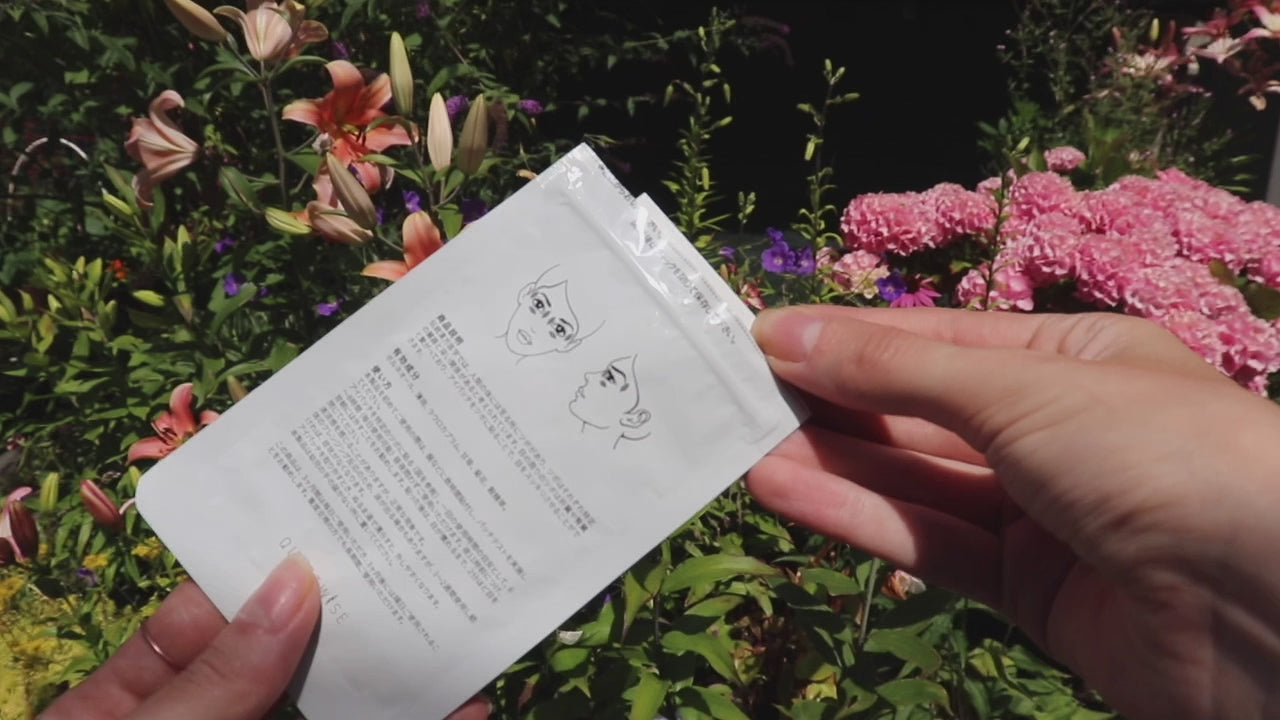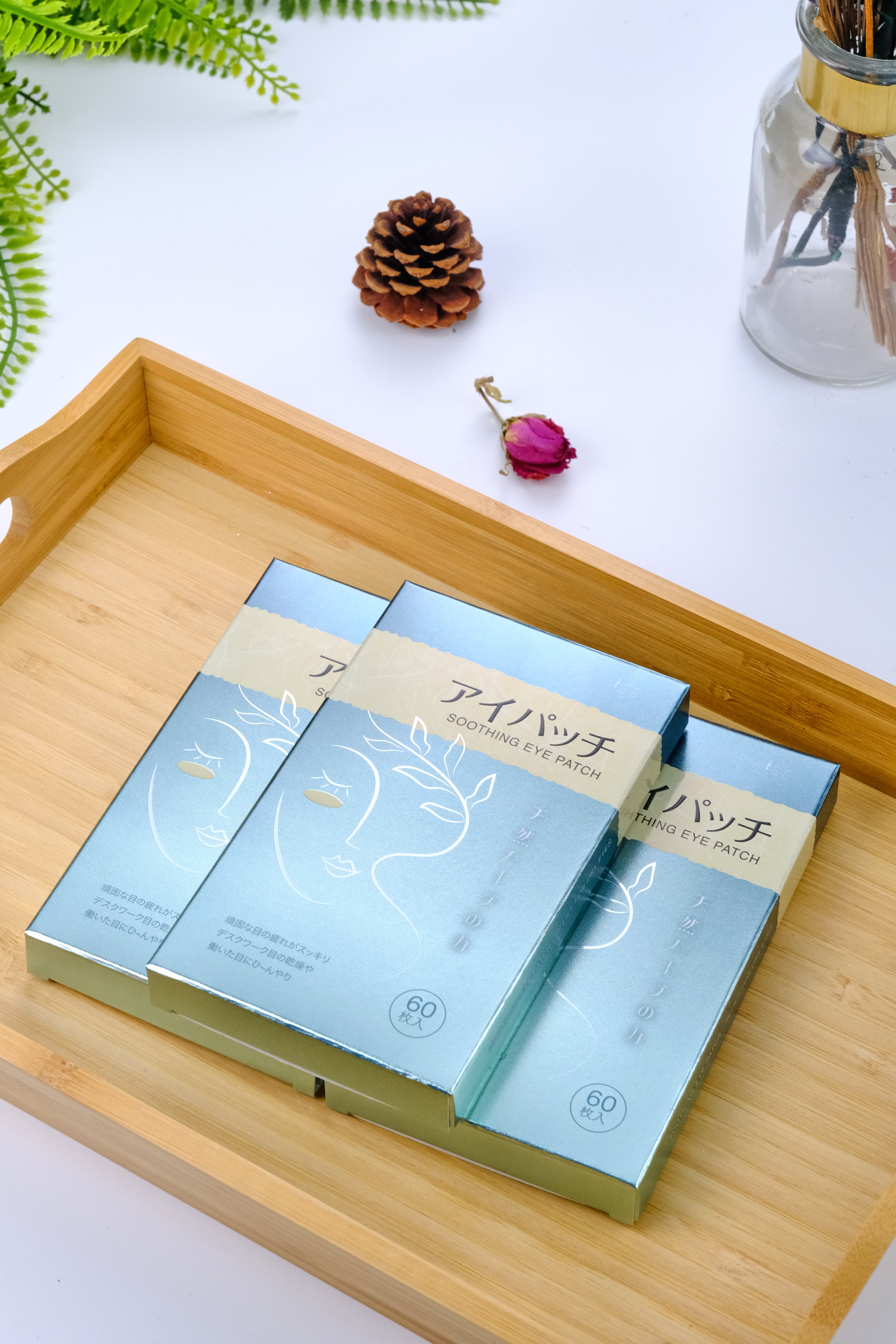Top Tips to Prevent Hay Fever Eye Itch This Spring
Ah, spring! Warmer weather, blooming flowers... and for many, the dreaded return of hay fever. That itchy, watery feeling in your eyes can make even the most beautiful spring day miserable. The persistent itching, redness, and swelling can be incredibly disruptive, impacting your daily activities and overall well-being. But don't despair! This year, take control of your hay fever symptoms and enjoy the season to the fullest with these top tips and a little help from Wise Quest Soothing Eye Patches.
Understanding Hay Fever Eye Itch: A Deeper Dive
Hay fever, or allergic rhinitis, is an allergic reaction to airborne allergens, most commonly pollen from trees, grasses, and weeds. When pollen comes into contact with your eyes, your immune system, mistakenly identifying the pollen as a threat, goes into overdrive. This triggers the release of histamine and other inflammatory chemicals. These chemicals cause the blood vessels in your eyes to dilate, leading to redness and swelling. The increased blood flow and inflammation contribute to the intense itching sensation, and often, excessive tearing. This hay fever eye itch is a common and frustrating symptom, impacting millions and significantly diminishing quality of life during the spring and summer months.
The severity of hay fever eye itch can vary greatly from person to person. Some individuals may experience mild discomfort, while others face debilitating symptoms that interfere with sleep, work, and daily activities. Understanding the underlying mechanisms of this allergic reaction is crucial for developing effective prevention and management strategies. The good news is, there are many steps you can take to minimize the impact of hay fever on your eyes and reclaim your spring.
The Science Behind the Itch: A Detailed Look at the Allergic Response
Let's delve deeper into the intricate process that leads to the characteristic hay fever eye itch. When pollen grains, tiny airborne particles released by plants, enter the eye, they encounter the ocular surface. This surface comprises the conjunctiva, a delicate membrane lining the inside of the eyelids and covering the sclera (the white part of the eye), and the cornea, the transparent front part of the eye.
Pollen grains, when they come in contact with the surface of the eye, trigger a cascade of events. Specialized immune cells, known as mast cells, residing in the conjunctiva, recognize the pollen as a foreign substance, initiating the allergic response. These mast cells release histamine and other inflammatory mediators, causing the characteristic symptoms:
- Itching: Histamine binds to receptors on nerve endings in the conjunctiva, triggering the sensation of intense itching.
- Redness: The release of inflammatory mediators causes the blood vessels in the conjunctiva to dilate, leading to visible redness.
- Swelling: Increased blood flow and fluid accumulation in the conjunctiva result in swelling of the eyelids and surrounding tissues.
- Tearing: The body's attempt to flush out the irritant, pollen, leads to excessive tearing or watering eyes.
Understanding this complex process highlights the importance of preventative measures. By reducing exposure to pollen and utilizing effective management strategies, we can minimize the activation of this allergic cascade and alleviate the bothersome symptoms of hay fever eye itch.
Top Tips for Preventing Hay Fever Eye Itch: A Comprehensive Guide
Prevention is key when it comes to managing hay fever. While you can't completely eliminate exposure to pollen, you can significantly reduce your risk of experiencing severe symptoms. Here are some essential tips to incorporate into your spring routine:
- Precise Pollen Tracking: Identifying your specific pollen triggers is paramount. Keep a journal noting your symptoms and correlating them with pollen levels in your area. Many weather apps and websites provide detailed pollen forecasts. This allows you to anticipate high-pollen days and adjust your activities accordingly.
- Strategic Outdoor Planning: Limit outdoor activities during peak pollen hours, typically the late morning and early afternoon. If you must be outdoors, try to choose less windy days, as wind disperses pollen further.
- The Protective Power of Sunglasses: Sunglasses act as a physical barrier, preventing pollen from directly entering your eyes. Choose wraparound styles for optimal protection.
- Meticulous Hygiene: After spending time outdoors, wash your face and hair thoroughly to remove any pollen that may have accumulated. Change your clothes as well, to prevent further exposure.
- Indoor Air Quality Control: Keep your windows closed, especially on high-pollen days. Consider using an air purifier with a HEPA filter to remove pollen from the air indoors. Regular vacuuming and dusting can also help minimize pollen accumulation in your home.
- Artificial Tears: The Lubricating Solution: Lubricating eye drops, also known as artificial tears, are highly effective in relieving dryness and flushing out irritants. Use them regularly throughout the day, as needed, to soothe your eyes. Avoid using drops containing preservatives, as these can sometimes irritate sensitive eyes.
-
Harness the Power of Nature: The Wise Quest Advantage: For targeted relief of hay fever eye itch, Wise Quest Soothing Eye Patches offer a unique solution. These patches, infused with traditional Chinese herbal medicine, provide soothing comfort and relief from a variety of eye discomforts, including dryness, redness, and inflammation. They gently work to reduce swelling and promote healthy blood circulation in the delicate eye area. Their natural ingredients offer a gentle, yet effective, approach to managing hay fever eye itch.

Beyond the Basics: Advanced Strategies for Hay Fever Relief
While the previous tips provide a strong foundation for managing hay fever eye itch, incorporating additional strategies can further enhance your relief and improve your overall comfort. Consider these advanced techniques:
- Consult an Allergist: A consultation with an allergist can provide a personalized diagnosis and treatment plan. Allergists can perform skin prick tests or blood tests to identify your specific allergens. They can recommend medication, immunotherapy (allergy shots), or other specialized treatments to effectively manage your hay fever.
- Over-the-Counter Medications: Antihistamines, available over-the-counter, can help reduce eye itching, redness, and swelling. Choose antihistamines formulated for eye allergy relief. Nasal sprays containing corticosteroids can also effectively reduce inflammation and relieve nasal congestion, a common symptom associated with hay fever.
- Cold Compresses: Applying cold compresses to your eyes can provide temporary relief from itching and swelling. The cold temperature helps constrict blood vessels, reducing inflammation and providing soothing comfort.
- Lifestyle Adjustments: Certain lifestyle choices can influence your hay fever symptoms. Avoid smoking, as smoke irritates the eyes and worsens allergic symptoms. Maintain a healthy diet rich in fruits, vegetables, and antioxidants to support your immune system and reduce inflammation.
- Regular Eye Care: Good eye hygiene is essential during hay fever season. Avoid rubbing your eyes, as this can worsen itching and inflammation. Gently cleanse your eyelids with a warm washcloth to remove any pollen or irritants.
- The Wise Quest Advantage: A Deeper Dive Using Wise Quest Soothing Eye Patches daily, can significantly reduce the symptoms of hay fever eye itch. These patches provide continuous relief throughout the day, reducing reliance on frequent applications of eye drops or other medications. The combination of traditional Chinese herbs promotes healthy blood flow and reduces swelling, leading to long-lasting comfort. The patches themselves are gentle on the delicate skin around the eyes and are a perfect complement to other strategies for managing hay fever.
Embrace Spring Without the Itch: A Holistic Approach
Hay fever eye itch doesn't have to ruin your spring. By adopting a proactive approach incorporating these tips and utilizing products such as Wise Quest Soothing Eye Patches, you can effectively manage your symptoms and enjoy the season to the fullest. Remember, consistency is key. By diligently following these preventative measures, you can significantly reduce the frequency and severity of your hay fever eye itch, allowing you to appreciate the beauty of spring without the discomfort.
Further Reading and Resources:
For more in-depth information on hay fever and its management, consider consulting these resources:
- Your primary care physician or allergist: They can provide personalized advice and treatment options tailored to your specific needs and allergies.
- Reputable allergy organizations: Many organizations offer comprehensive information on allergies, including hay fever, and provide support to those affected.
- Medical journals and publications: Peer-reviewed studies and articles offer valuable insights into the latest research and treatment advancements in allergy management.
Remember, taking charge of your allergies empowers you to enjoy life's simplest pleasures, without letting hay fever hold you back. Reclaim your spring and make the most of the season!











